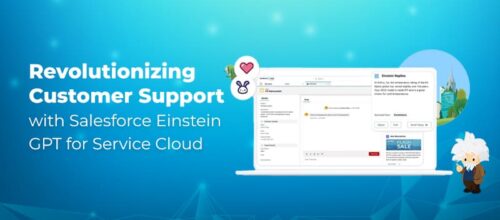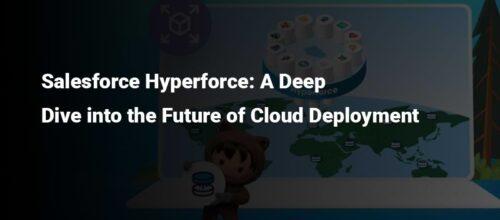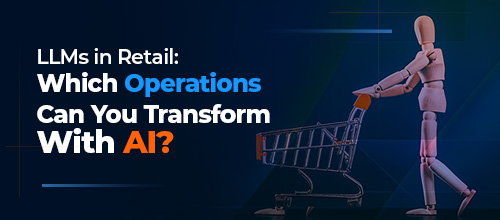Driving Operational Excellence with MuleSoft Automation

Written by Harini Krishnamurthy
Content Writer
July 6, 2023
Introduction to MuleSoft Automation
MuleSoft is an integration platform that provides tools and capabilities for connecting different systems, applications, and data sources within an organization. By leveraging MuleSoft’s automation capabilities, organizations can unleash transformation in several ways.
Integration and Automation with MuleSoft's Anypoint Platform
MuleSoft’s Anypoint Platform allows organizations to integrate disparate systems and applications, enabling seamless data flow and communication. With MuleSoft, organizations can automate the integration of systems, both on-premises and in the cloud, reducing manual effort and improving overall efficiency. APIs can be created and managed using MuleSoft’s API management capabilities, enabling Automation of data exchange and interactions between different systems. MuleSoft’s integration platform includes features like flow design and orchestration, which allow organizations to automate complex workflows and business processes by defining the desired sequence of actions. As a result, organizations can automate tasks such as data transformation, data validation, and decision-making processes, reducing manual intervention and improving process efficiency.
Take an hour off and master the skills of managing and governing APIs with our webinar on Universal API Management – a service available on MuleSoft Anypoint Platform.
Automating Data Synchronization and Replication
MuleSoft’s integration capabilities can be leveraged to automate data synchronization and replication between systems. Organizations can set up automated data pipelines to ensure data consistency and real-time synchronization between different databases, applications, or cloud platforms. This enables organizations to have accurate and up-to-date data across systems, supporting better decision-making and operational efficiency. MuleSoft also supports event-driven architecture, where systems can react to and trigger real-time events. The event-driven architecture makes it easy for organizations to integrate with AI services triggered by specific events or conditions. For instance, organizations can automate the processing of events, such as customer interactions or sensor data, by integrating AI systems that analyze and respond to these events in real time. This enables organizations to incorporate AI-driven insights and actions into their integration workflows.
MuleSoft’s data integration capabilities enable organizations to automate the extraction, transformation, and loading of data from various sources into target systems. This includes data mapping, data validation, and data enrichment processes. As a result, organizations can streamline data processing, reduce errors, and improve data quality by automating these data integration and transformation tasks.
CI/CD Automation with MuleSoft
MuleSoft supports CI/CD practices by enabling organizations to automate the deployment of integrations and APIs. With automated deployment pipelines, organizations can ensure faster and more reliable delivery of integrations, reducing manual effort and minimizing errors during the release process.
Monitoring and Alerting for Automation
MuleSoft provides monitoring and alerting capabilities to track the performance and health of integrations and APIs. Organizations can set up automated monitoring processes to detect issues, generate alerts, and trigger notifications or corrective actions. This helps organizations proactively identify and resolve issues, ensuring the smooth functioning of integration processes.
Integrating AI Services for Intelligent Automation
MuleSoft’s Anypoint Platform can integrate with various AI services and platforms through APIs. This allows organizations to connect their integration flows with external AI capabilities, such as natural language processing (NLP), machine learning (ML), image recognition, sentiment analysis, chatbot, or predictive analytics. Organizations can enhance their integration processes by integrating AI services with intelligent data processing and decision-making capabilities. It can be used to integrate with AI-powered data transformation and enrichment services. For example, organizations can leverage AI-based data cleansing, data validation, or data enrichment services to improve the quality and accuracy of data flowing through their integration pipelines. MuleSoft can orchestrate the integration and communication between different systems and the AI services responsible for data transformation and enrichment. In addition to that, organizations can incorporate AI-driven decision-making capabilities into their integration processes. This can be particularly useful in scenarios where complex data analysis, pattern recognition, or predictive modeling is required to make informed decisions within integration flows. AI can help organizations automate decision-making tasks and optimize processes based on data-driven insights.
These potential goals will lead to a more connected experience for customers, support teams, IT, and other employees. Yet, many organizations struggle to move away from legacy systems and processes; a majority still address system and software compatibility disparities with single-point solutions. Leading organizations are now utilizing composable frameworks, which involve reusing business assets, such as APIs, to streamline system and software integration for the agility needed to create better end-to-end experiences quickly.
How MuleSoft Builds Composable Integration Frameworks?
Backend System Integrations
Anypoint Platform’s API-led connectivity facilitates integration among systems, applications, and databases because of the way it is designed. For example, developers can create one API to connect and then use it again to complete similar tasks between additional applications or with different data types.
Integrations for Seamless Data Management
An API-led data retrieval and matching approach can serve up single-paned views of customers and others. Moreover, it achieves this much more easily than many of the master data management systems on the market.
Finally, by leveraging MuleSoft’s automation capabilities, organizations can modernize integration solutions and achieve seamless integration, improve operational efficiency, achieve faster time-to-market, and enhance agility. It enables organizations to focus on value-added activities, reduces manual effort, and allows for better utilization of resources.
Conclusion
MuleSoft Anypoint Platform supplies organizations with the reusable API and microservices architecture they need to achieve scalable connectivity, Automation, and central governance. All this leads to increased efficiency, reduced development time, and seamless experiences.
At Royal Cyber, we can help you to implement API strategies to drive business automation, view and retrieve valuable data, modernize legacy systems, streamline SAAS integration, move to the cloud, save time, and provide a better customer experience. To learn more about MuleSoft Integration, please get in touch with us at [email protected] or visit www.royalcyber.com.



